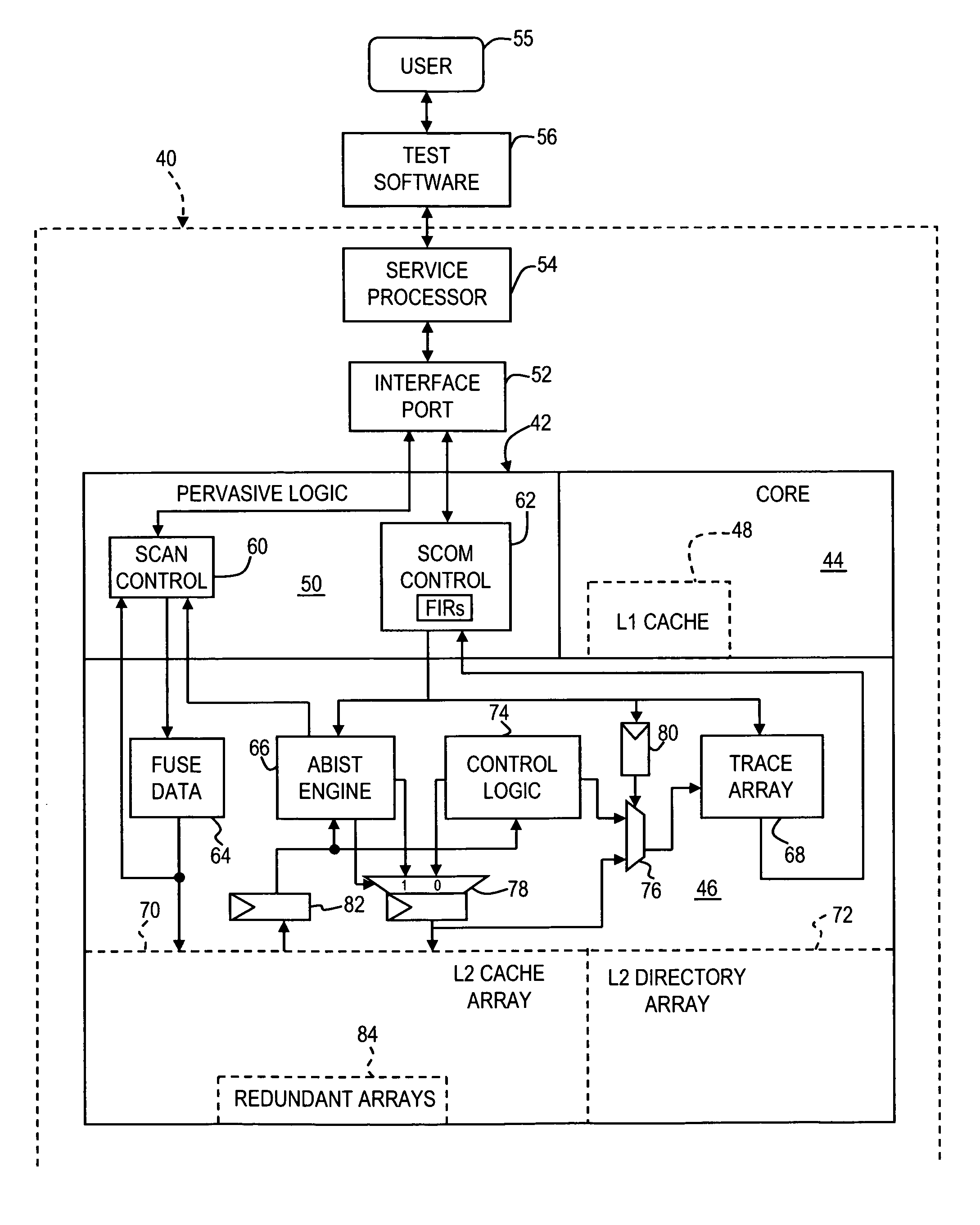Method for cache correction using functional tests translated to fuse repair
a functional test and cache correction technology, applied in error detection/correction, instruments, computing, etc., can solve problems such as inability to determine the proper data stream, eccs cannot be used to detect and correct single-bit, and given cache block may contain an incorrect valu
- Summary
- Abstract
- Description
- Claims
- Application Information
AI Technical Summary
Benefits of technology
Problems solved by technology
Method used
Image
Examples
Embodiment Construction
)
[0021] With reference now to the figures, and in particular with reference to FIG. 2, there is depicted one embodiment 40 of a computer system constructed in accordance with the present invention. Computer system 40 includes a processing unit 42 having one or more processor cores 44 and a second level (L2) cache 46. Each processor core has its own L1 (on-board) cache 48. Computer system 40 may include additional features not shown in FIG. 2, such as system memory, one or more interconnect buses, and peripheral devices.
[0022] Computer system 40 also includes pervasive logic 50 which is used to load values into internal latches and access internal registers of various components in system 40. Pervasive logic 50 may be connected to an interface (JTAG) port 52 which in turn is connected to a service processor 54. JTAG port 52 complies with the Institute of Electrical and Electronics Engineers (IEEE) standard 1149.1 pertaining to a test access port and boundary-scan architecture. JTAG ...
PUM
 Login to View More
Login to View More Abstract
Description
Claims
Application Information
 Login to View More
Login to View More - R&D
- Intellectual Property
- Life Sciences
- Materials
- Tech Scout
- Unparalleled Data Quality
- Higher Quality Content
- 60% Fewer Hallucinations
Browse by: Latest US Patents, China's latest patents, Technical Efficacy Thesaurus, Application Domain, Technology Topic, Popular Technical Reports.
© 2025 PatSnap. All rights reserved.Legal|Privacy policy|Modern Slavery Act Transparency Statement|Sitemap|About US| Contact US: help@patsnap.com



